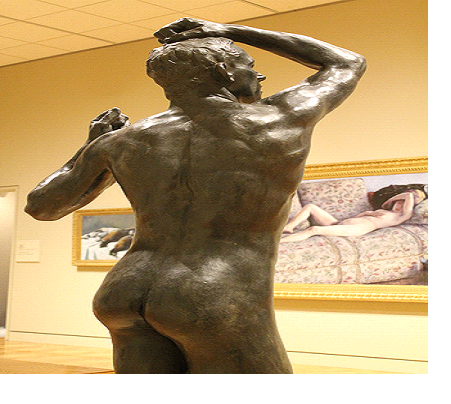Auguste Rodin is considered to be the father of modern sculpture. This Frenchman was born in Paris in 1840 and died in 1917. He was a highly talented artist, who like many, was shunned by the official art world academies of the time. He worked hard for years creating beautiful ornamental sculptures before he found both success and scandal on the road to fame.
Rodin was born into a poor background, but his parents sent him to boarding school nonetheless. He didn’t do well, perhaps due to his short sightedness but at the age of 13 decided to pursue a career in the arts. He studied drawing and sculpture for 3 years and while he passed the drawing requirements, he failed three times to pass the sculpture competition. His unique style clearly didn’t impress the established style of the time.
He spent the next 20 years working for others in plaster workshops making architectural ornaments. His impact on the world of sculpture has given rise to many different modern forms we see today. For example, Corten Metal Sculpture. During his later life, Rodin enjoyed greater popularity and success and here are some of his finest and most famous works:
The Age of Bronze – 1876
This sculpture provided the first scandal of Rodin’s career. It was an unconventional sculpture by the standards of the time, a naked common man with obscure symbolism which confused critics. Rodin was also accused of casting directly from the man’s body and not creating the shape by hand. This greatly upset Rodin who was able to vindicate himself by providing photographs of his model. This is a testament to his skill as a sculptor.

The Gates of Hell – 1899
This was a labour of love for Rodin who worked on this sculpture for more than 20 years. Originally the piece was commissioned for the doors of a museum in Paris. The museum never opened and Rodin’s enthusiasm dimmed over the years and never seemed to reach his satisfaction. It wasn’t until after his death that two bronze casts were made from the plaster version.
The Thinker – 1880
This is one of Rodin’s most famous works. Rodin was heavily influenced by Michelangelo for this piece and the figure represents Dante overlooking the hell below him. This work inspired him so much that he chose it to sit on his tombstone. It was cast into bronze in 1902 and more than 50 casts were made of the original, which are found today all over the world.

The Kiss – 1884
Another iconic example of Rodin’s work is The Kiss. Based on another story from Dante’s Divine Comedy, the erotic sculpture was created during one of Rodin’s love affairs. He made numerous versions of this sculpture so that his art could be see as widely as possible. By the time of his death in 1917, more than 300 copies of The Kiss had been produced in bronze. Originally, the sculpture could have been intended for the Gates of the Hell but given that the loving embrace doesn’t represent the same despair as the other sculptures, Rodin may have thought it didn’t suit being placed amongst the Gates of Hell.